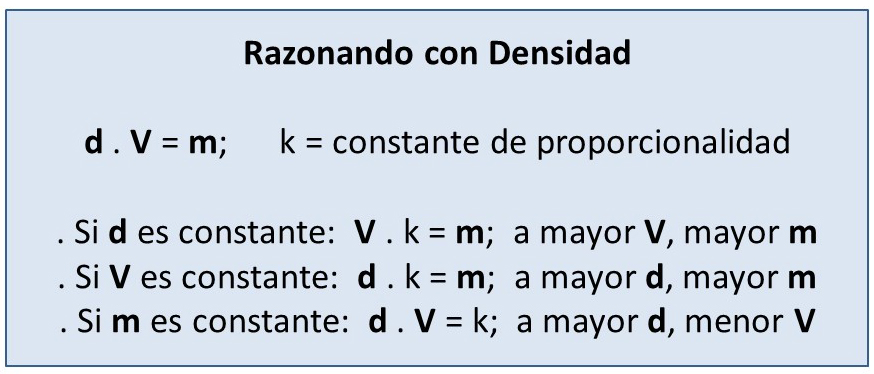La comprensión de estudiantes de primer año de universidad sobre el concepto de densidad. Análisis de entrevistas
Contenido principal del artículo
Resumen
La densidad es un concepto inicial y básico en las ciencias experimentales. En este artículo se analizan y discuten los resultados obtenidos de entrevistas con protocolo pensando en voz alta sobre la comprensión del concepto de densidad. Se entrevistaron 12 estudiantes de un curso de química de primer año de universidad, a los que se les solicitó explicar las respuestas elegidas al resolver el cuestionario Razonando con Densidad. Este cuestionario indaga las relaciones lógico-matemáticas entre las variables m, V y d. Se presentan los resultados clasificados en categorías y la discusión de sus implicaciones.
Detalles del artículo
Citas en Dimensions Service
Citas
Anamuah-Mensah, J. (1986). Cognitive strategies used by chemistry students to solve volumetric analysis problems. Journal of Research in Science Teaching, 23, 759-769 https://doi.org/10.1002/tea.3660230902
Botero, H. (2010).Una revisión del concepto de densidad: la implicación de los conceptos estructurantes en el proceso de enseñanza-aprendizaje. Revista Educación y Pensamiento, 17, 23-32.
Bunce, D. y Cole, R. (Eds.). (2014). Tools of chemistry education research. ACS Symposium Series; American Chemical Society.
Charters, E. (2003). The use of think-aloud methods in qualitative research. An introduction to think- aloud methods. Brock Education Journal, 12(2), 68-82. https://doi.org/10.26522/brocked.v12i2.38
Dawkins, K., Dickerson, D., McKinney, S. y Butler, S. (2008). Teaching density to middle school students: preservice science teachers’ content knowledge and pedagogical practices. The Clearing House: A Journal of Educational Strategies, Issues and Ideas, 82(1), 21-26. https://doi.org/10.3200/TCHS.82.1.21-26
Fassoulopoulos, G., Kariotoglou, P. y Koumaras, P. (2003). Consistent and inconsistent pupils’ reasoning about intensive quantities: The case of density and pressure. Research in Science Education, 33(1), 71-87. https://doi.org/10.1023/A:1023658419034
Harrell, P. y Subramaniam, K. (2014). Teachers need to be smarter than a 5th grader: What elementary pre-service teachers know about density. Electronic Journal of Science Education, 18(6), 1-23.
Hashweh, M. (2016). The complexity of teaching density in middle school. Research in Science & Technological Education, 34(1), 1-24. https://doi.org/10.1080/02635143.2015.1042854
Herrington, D. y Daubenmire, P. (2014).Using interviews in CER projects: options, considerations, and limitations. In D. Bunce y R. Cole. Tools of Chemistry Education Research (pp. 31-59), ACS Symposium Series, American Chemical Society: Washington, DC.
Hewson, M. (1986). The acquisition of scientific knowledge: Analysis and representation of student conceptions concerning density. Science Education, 70(2), 159-170. https://doi.org/10.1002/sce.3730700210
Heyworth, R. (1999). Procedural and conceptual knowledge of expert and novice students for the solving of a basic problem in chemistry. International Journal of Science Education, 21(2), 195-211. https://doi.org/10.1080/095006999290787
Howe, C., Nunes, T. y Bryant, P. (2011). Rational number and proportional reasoning: using intensive quantities to promote achievement in mathematics and science. International Journal of Science and Mathematics Education, 9, 391-417. https://doi.org/10.1007/s10763-010-9249-9
Martínez-Borreguero, G., Naranjo-Correa, F., Cañada, F., Gómez, D., y Martín, J. (2018). The influence of teaching methodologies in the assimilation of density concept in primary teacher trainees. Heliyon, 4(11), e00963. http://doi.org/10.1016/j.heliyon.2018.e00963
Napal, M., Echeverría, J., Zulet, A., Santos, L. y Ibarra, J. (2018). Estrategias del alumnado de Educación Secundaria para estimar la densidad. Enseñanza de las Ciencias, 36(1), 61-78. https://doi.org/10.5565/rev/ensciencias.2215
Raviolo, A., Carabelli, P. y Ekkert, T. (2022). Aprendizaje del concepto de densidad: la comprensión de las relaciones entre las variables. Latin American Journal of Physics Education, 16(2), 2310-1-9.
Raviolo, A., Farré, A. y Traiman-Schroh, N. (2021). Students` understanding of molar concentration. Chemistry Education: Research and Practice, 22(2), 486-497. https://doi.org/10.1039/D0RP00344A
Roach, L. (2001). Exploring students’ conceptions of density. Journal of College Science Teacher, 30(6), 386.
Smith, C., Carey, S., y Wiser, M. (1985). On differentiation: A case study of the development of the concepts of size, weight, and density. Cognition, 21, 177-237. https://doi.org/10.1016/0010-0277(85)90025-3
Stavy, R. y Tirosh, D. (1996). Intuitive rules in science and mathematics: the case of “more of A-more of B”. International Journal of Science Education, 18(6), 653-667. https://doi.org/10.1080/0261976960190203
Talanquer, V. (2014). Chemistry education: ten heuristics to tame. Journal of Chemical Education, 91, 1091-1097. https://doi.org/10.1021/ed4008765

Educación Química por Universidad Nacional Autónoma de México se distribuye bajo una Licencia Creative Commons Atribución-NoComercial-SinDerivar 4.0 Internacional.
Basada en una obra en http://www.revistas.unam.mx/index.php/req.




